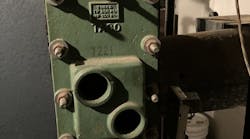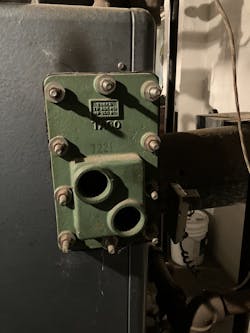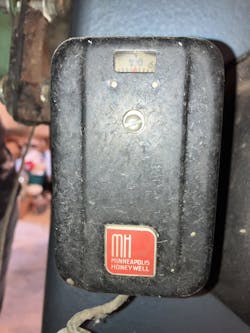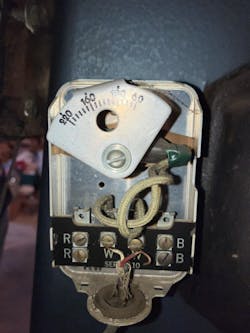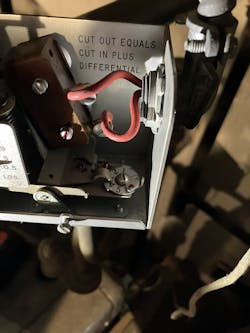The Kid came out of his office and over to my cubicle. Yeah, he has an office and I have a cubicle, but that’s the way I like it. Everyone in our commercial equipment department used to have cubicles until we recently moved into a much larger building. Now with so much space, the Kid is lobbying for a golf simulator. So far, construction has only started on a 2,500 square foot hands-on training lab with live fire equipment.
It was a Friday morning and he was carrying a small piece of paper. From the look on his face, I could tell it was going to be interesting. The day before, a trouble job that both of us had been working on for weeks was finally resolved. (I’ll explain that one next month.) This day, the Kid wanted the old man to go to a job, since it was one of those old-fashioned steam jobs in an old-fashioned farmhouse. He only likes the high efficiency hot water jobs—preferably radiant.
Rare Combination
That sounded interesting to me, especially his comment about a control at the back of the boiler. Usually, the controls on a steam boiler are at the front or on one side. The fact that this control wasn’t in a normal location made me want to take a look.
Navigation took me further south into the former tobacco growing region of Kentucky. The “farmhouse” was much larger than expected, more the size of the houses on the big thoroughbred horse farms, just a little further south. I guess this farmer did well growing tobacco many years ago.
Vintage Tankless
The tech took me through the well-cared-for home and led me to a mid-century boiler. Along the way, he said he My local experience, here on the south shore of Ohio, contradicts the notion of popularity. The tankless heater heats the domestic hot water for the house, like an instantaneous hot water heater does today. As water flows through an open faucet, fresh water flows through the copper coils behind that plate on the side of the boiler and comes out hot. Curiously, it appears like this one was never hooked up.
As long as the water in the boiler is hot enough, the flow rate is correct, and the heater is sized properly, there is a consistent flow of hot water available at the faucet. Sounds like it could work. It did and still can, as long as you keep your boiler water at say, 150ºF or so, 24/7/365. Unless you know exactly when you want to use hot water next. Kinda expensive way to do it nowadays.
Controls Setup
Can you see the mercury switch in photo 3? It’s behind the scale and attached to a sensing bulb that is located in a well that senses the steam boiler’s water temperature. This one was set at about 100ºF and wired to make the burner circuit whenever the temperature dropped below 100ºF, with some fixed differential involved. When it was wired in the burner circuit, it was cycling the oil burner on and off to maintain the water in the steam boiler at about 100ºF, an odd setting since that’s not hot enough to heat domestic hot water.
I had them cycle the house thermostat a few times and the oil burner responded in kind, no problem there. The crew seemed interested in the rest of the controls on the old boiler, and I had time, so I gave them the nickel tour. We started with the high-pressure limit control installed off the top back of the boiler right above the tankless heater, not on the side of the boiler with the low water cutoff, where it is normally located.
Cut-in + Differential= Cut-off
If the pressure in the boiler is below a half pound, as it will be if it has been off for awhile, then the burner will fire when the thermostat calls and run until the thermostat is satisfied, or the pressure rises to the cut-off setting of one and a half pounds. Cut-in setting of .5# plus 1# differential setting equals 1.5# cut-off. The modern version of that pressure control now has a white dial with black numbers instead of the metal one in the old version.
Residential steam boilers operate best when kept at minimum pressure. The water returning from the radiators has to be able to get back into the boiler, which is under pressure. The lower the pressure of the boiler, the easier it is for the water to get back in. I’ll explain that fundamental of steam boilers early next year.
Patrick Linhardt is a thirty-nine-year veteran of the wholesale side of the hydronic industry who has been designing and troubleshooting steam and hot water heating systems, pumps and controls on an almost daily basis. An educator and author, he is currently Hydronic Manager at the Corken Steel Products Co.


